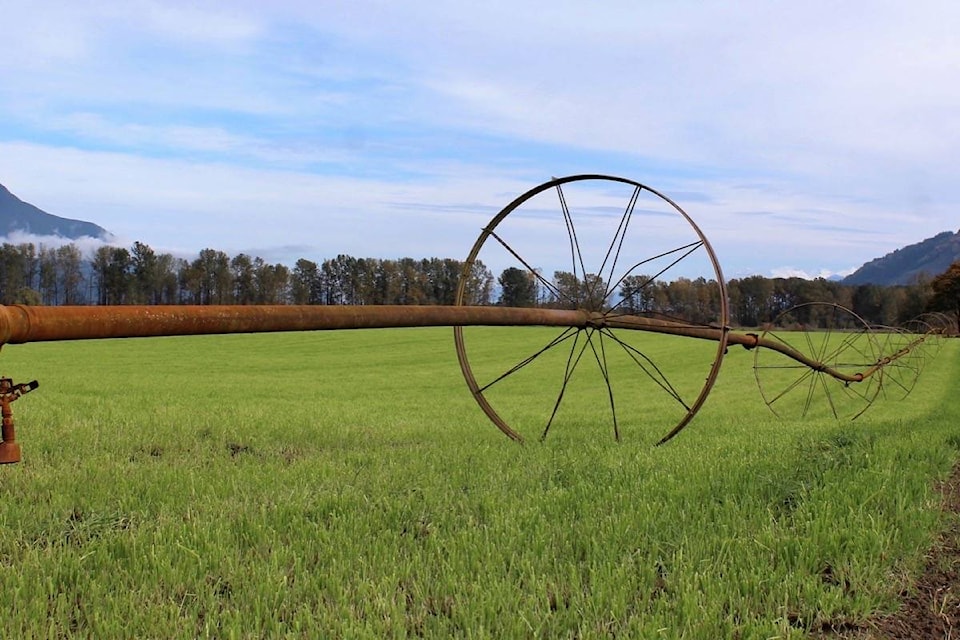A Comox Valley resident says a number of families have been blindsided by legislative changes to protect B.C. farmland.
Meghan McPherson says new regulations under Bill 52 have “devastated our plans” for property purchased in Area B of the regional district in 2017. McPherson had an aging-in-place plan for her in-laws and for her widowed mother. She says the 2.4-hectare property had allowed for a coach house suite above the garage, and to move a modular onto the property.
She discovered the law had changed after her mother had sold her house.
“It’s completely derailed us,” McPherson said. “I’m not the only one. You have to have farm status, and the additional dwelling has to be for farm use…The way this law was written is so flawed. It’s crazy. It screws so many people with ALR (Agricultural Land Reserve) land in this province, who don’t even know it yet. These farmers that have farmed for years on their land can’t follow through with their legacy planning for their family, because they are now not in compliance.”
The new law, which came into effect Feb. 22, intends to encourage farming and protect ALR land from the effects of large developments and commercial projects. It also intends to stop illegal dumping of waste on farmland.
READ MORE: Legislation to protect farmland comes into effect
Agriculture Minister Lana Popham said her office has received a letter from a Comox Valley resident about her plans to put multiple residences on her property in the ALR for non-farm purposes.
“My staff are looking into this situation,” Popham said by email. “I understand there are people who live in the ALR and are not using the land for farming, and I appreciate that they may want to build, or place more than one residence on the property for their family members or for rental income.”
Those living in the ALR who want to build additional homes to support farming operations can do so with permission from their local government and the Agricultural Land Commission, Popham added.
Arzeena Hamir, Area B director of the Comox Valley Regional District, notes that some people who had contacted the CVRD before the process changed were caught off guard.
“Coming from the committee that put forward some of these ideas and changes, what it is meant to do is to strengthen the ALR zone, and to ensure that it’s an agriculture-first lens that is looked at for all applications,” Hamir said. “There’s so little agricultural land in B.C. It’s not even five per cent. The land that’s classified ALR, we really have to protect it. Otherwise, it’s gone.”
“With a growing population, climate change and ongoing land-use pressures, it has never been more important to ensure that the tiny percentage of land in B.C. that is best suited for agriculture is available and affordable for farmers and ranchers to produce the food that British Columbians need,” Popham added.
Hamir notes the only thing that’s changed for farmers is who they apply to. If a family member wants to age in place, then a trailer or second temporary home is allowed — as long as people are farming.
“Where the issue happens is those who are applying for temporary homes and are not farming land,” Hamir said.
McPherson questions why she was allowed to buy farmland in the first place.
“I was just looking for a rural property in my kids’ school catchment,” she said. “The flaw in the law is about real estate. It’s who can buy farmland that’s the problem.
“I have one hectare of ALR land that I’m supposed to turn into a revenue-generating farm, in between my full-time job and raising my five kids in order to move my mom into the modular that she invested in already.”
McPherson suggests wording in the legislation needs to change from will or won’t to will and may.
“Then at least they could decide on a case-by-case basis. The way the law’s written is black or white – it’s will or won’t.”
McPherson also said the bill was passed and implemented with “such haste” that municipalities did not understand what was happening.
“Government could have done a better job at communicating,” Hamir said.
Government said those with permits and authorizations in place on Feb. 22 would be grandfathered under the old system, provided they begin substantial construction by Nov. 5, 2019.
reporter@comoxvalleyrecord.com
Like us on Facebook and follow us on Twitter
